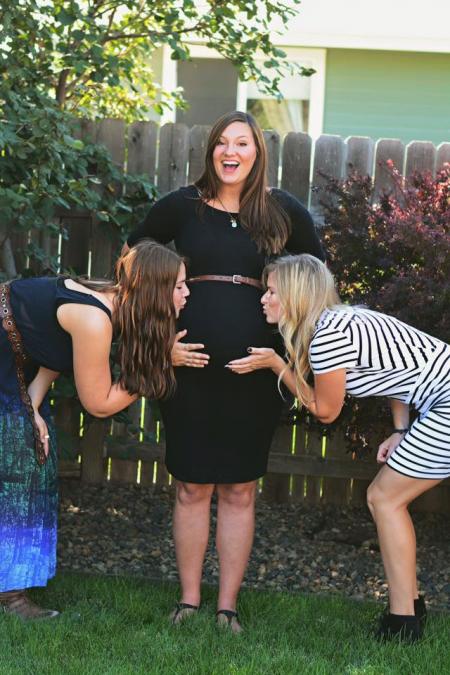
The most prevalent type of adoption is adopting a stepchild. When a stepparent adopts, he or she accepts to take on the role of legal parent and full responsibility for his or her spouse's child. When a child is adopted by a stepparent, the noncustodial parent (the parent who does not live with the child) loses all rights and responsibilities to the child, including child support.
Legal points to think about
State law governs stepparent adoption, as it does all other types of adoption in the United States. Most states make it easier for stepparents to adopt. Your family, for example, may not require legal representation. Parents in other types of adoption may be required to have a home study, but you may not be. Every state, however, is unique. Even if a home study is not necessary, many states demand a criminal background check. Make certain to learn about the legislation in your state.
The length of time it takes to adopt a child varies by state. Some states will not allow a stepparent adoption unless you have been married to the child's parent for at least a year and have lived with the child. In a few states, a child's legal ability to inherit from either birth parent or other family members is unaffected by stepparent adoption. Because the child's legal links to the noncustodial birth parent are broken through adoption in most states, the child can only inherit from the former birth parent if the former parent makes provision for the child in his or her will.
Another possibility to get a stepparent adoption without the biological father's consent is if the child has been "abandoned." For a child to be considered "abandoned," the must have failed to pay child support or communicate with the child for a certain period of time, generally a year.
Who is required to give consent?
Unless the kid's other parent (the noncustodial parent) has abandoned the child, you must have the consent (or agreement) of both your spouse and the child's other parent (the noncustodial parent) if you want to adopt a stepchild. The noncustodial parent relinquishes all rights and responsibilities, including child support, by granting his or her permission. In nearly all states, an older kid must also give his or her agreement to be adopted by a stepparent. The minimum age at which a child must assent varies by state, but in general, the minimum age for consent ranges from 10 to 14. Each state has its own method of obtaining consent. The noncustodial parent can give a written statement in various states.
He or she may be required to appear before a judge or file paperwork with the court in other states. In some states, the parent is required to get counseling, have the laws and rights explained to him or her, or consult with a lawyer. In some cases, including abandonment, state adoption laws do not require the approval of the other parent. However, it is critical to follow all legal requirements in order to gain legitimate consent. If these standards are not met or fraud has occurred, certain states' laws allow permission to be revoked and an adoption to be challenged or rejected.
It can be tough to persuade the child's other parent to consent to your adoption. Even if the noncustodial parent protests or contests the adoption, certain states' laws allow it to happen. For example, if the noncustodial parent has not contacted the child for a particular amount of time, this may be permitted. These are likely to be difficult situations. You might want to seek legal advice. You may be qualified for free legal assistance if you can not afford to hire an attorney. In some states, the court will also designate a representative for your child (a guardian ad litem, sometimes called a "GAL").
-
INFORM YOURSELF ABOUT YOUR STATE 'S STEPPARENT ADOPTION LAWS
Start by reading the laws covered in the preceding sections. Nothing, however, can substitute for the qualified legal guidance of an adoption lawyer who is a member of your state's bar. Adoption lawyers will be familiar with the applicable legislation and will be able to discuss your specific situation with you and offer advice on the adoption procedure.
-
GET IN TOUCH WITH THE ADOPTIONS COURT IN YOUR COUNTY
In your state, an adoption petition must be filed with the relevant court. Adoptions are handled in juvenile court in various states. Adoptions are handled by family courts or surrogacy courts in other states.
Request to talk with a court clerk or another member of staff who can provide you with information on stepparent adoptions. (Court staff are not permitted to provide legal advice.) Many courts provide a packet of material that you can request to be mailed to you.
Find out during your phone contact if the court has a prepared packet:
-
Whether you need to employ a lawyer or if you can represent yourself in court.
-
Where can you get the necessary legal forms?
-
GET THE REQUIRED LEGAL FORMS AND SUBMIT THEM
Many states let select publishing companies to stock and sell legal forms for judicial procedures to the general public. They are available online in other states. Questions about you and the kid you want to adopt will be asked on these forms.
They might request the following:
-
The child's current name and the name that will be given to him or her after the adoption
-
How long have you been married to the parent of the child?
-
The location of the child's birth.
Typically, you will be required to show verification of this information, such as a copy of the noncustodial parent's assent, a child's birth certificate, and a marriage license. If you employ a lawyer, this step will be taken care of for you.
-
ATTEND THE PRELIMINARY AUDIENCE
Following the submission of your forms, a preliminary hearing (court) date may be set. The length of time it takes to get a hearing depends on where you reside and how busy the court is at the time.
This hearing will almost certainly be required of both you and your child. Everyone concerned will be questioned by a court (or magistrate).
In addition, if your child is of legal age in your state, the judge or magistrate may ask him or her to confirm that he or she consents to the adoption. Your lawyer can provide you with further information about what happens during hearings in your area. The judge or magistrate will designate a date for the adoption to be finalized at the conclusion of this hearing. This preliminary hearing is frequently waived in stepparent adoptions.
-
COMPLETE THE ADOPTION PROCESS
In some states, the court may order frequent visits by a social worker following the first adoption hearing to ensure that all members of the family are adjusting well to the adoption. After that, a final adoption hearing is arranged, which could be a few months (or longer) after the first one. At this hearing, an adoption certificate and/or order will be issued, listing the stepparent as the child's legal parent and the child's new name if the adoption petition requested one. You may wish to obtain additional copies of this legal document for your records. Whether or not you need to attend this hearing will be determined by your lawyer or the court.
-
SUBMIT A NEW BIRTH CERTIFICATE APPLICATION
You can file for a new birth certificate for your child once the adoption is finalized. If the child's name has changed, this certificate will reflect the new name and designate the stepparent as the child's parent. PARENTAL ASSISTANCE Adoption does not end after the paperwork is signed. It's more of a process than a one-time event. It may take some time for your child and family to adjust to being a new type of "blended family." Parenting is a profession that lasts a lifetime. Adoptive families, like any family, have difficulties from time to time.



























